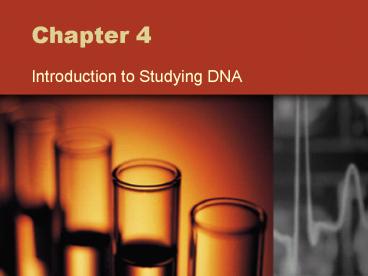Introduction to Studying DNA - PowerPoint PPT Presentation
1 / 9
Title:
Introduction to Studying DNA
Description:
Nearly all prokaryotes have a single circular chromosome ... Vibrio cholerae, the causative agent of cholera. Has two circular chromosomes ... – PowerPoint PPT presentation
Number of Views:83
Avg rating:3.0/5.0
Title: Introduction to Studying DNA
1
Chapter 4
- Introduction to Studying DNA
2
(No Transcript)
3
Sources of DNA-Prokaryotic DNA
- Nearly all prokaryotes have a single circular
chromosome - Contained within a conglomeration of ribosomes
- Other proteins related to transcription and
translation - Region called the nucleoid
- Opposed to the well defined, double membrane
bound eukaryotic nucleus - Certain exceptions
- Borrelia burgdorferi and the genus Streptomyces
contain linear chromosomes, like the eukaryotes - Vibrio cholerae, the causative agent of cholera
- Has two circular chromosomes
- Smaller of which contains most of the genes
responsible for virulence
4
Sources of DNA-Prokaryotic DNA
- Plasmids
- Small (about 1 to 10 thousand base pairs),
circular pieces of DNA - Replicated by the host's DNA replication
machinery - Genes are not absolutely critical for general
survival - In nature
- Usually contain special genes that confer some
type of selective advantage such as antibiotic
resistance - Called the R plasmids
- Virulence
- In genetic engineering artificially introduced
plasmids carry genes to be expressed and studied - They are Transformed-take up foreign DNA and
express the genes on the newly acquired DNA
5
(No Transcript)
6
Sources of DNA-Bacterial Cell Culture
- Bacterial cells must be provided with an
environment to grow - Broth
- Liquid medium
- Agar
- Solid medium
7
Sources of DNA-Bacterial Cell Culture
- Agar
- Unbranched polysaccharide
- Obtained from the cell walls of some species of
red algae or seaweed - polymer made up of subunits of the sugar
galactose - Agar polysaccharides serve as the primary
structural support for the algae's cell walls
8
(No Transcript)
9
Sources of DNA-Mammalian Cell Culture

